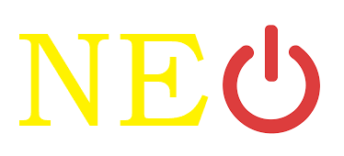Many of us have several bank accounts these days. Perhaps we opened one when we were in college, and it remains balanced. Maybe another was available for employment. As a joint account with a spouse, yet another. Another was offering a one-year CD at a really nice discount. In any case, you could at some point be curious about how to move money between banks.
Transferring money with actual cash, a cheque, a wire transfer, a bank draft, or a money order may seem antiquated in today's technologically advanced world. Even while there are speedier technological means to move money across accounts, states, or even countries, the old-fashioned techniques are still viable possibilities, even though they might seem less popular. Furthermore, there are low-cost alternatives to transfer money, and the most cost-effective option may change based on your specific situation.
Many other transfer options, such as wire transfers to another bank, state, or nation, can be set up with the assistance of a bank teller. You'll need the account number you want to send money to and the bank's routing number if you want to transfer money to an account at a different financial institution. Money transfers to other financial institutions are sometimes accompanied by fees.
Your Bank
A bank is able to help with a variety of transfers. An ACH transfer is a simple and cost-free method that you may use at your bank to move money between accounts that are part of the same financial institution. You can initiate the transfer online or in person at a branch by taking money out of one account and depositing it into another.
You can transfer money overseas through your bank as well, but you'll typically need a lot more details, like the account holder's name and address, the financial institution to which the money is being sent, and the recipient bank's International Bank Account Number (IBAN) or Society for Worldwide Interbank Financial Telecommunications (SWIFT). Sending international wire transfers in US dollars might run you about $45. Sending money abroad costs roughly $35. Rates can fluctuate and differ based on your bank.
Zelle
Founded in 2017, Zelle is one of the newest participants in the payment landscape. Early Warning Services, a private financial services company, is the owner of the digital payments network based in the United States. Users enroll their email address and U.S. cell number with the Zelle app or through their bank's Zelle electronic portal in order to use the service (if they have funds in a U.S. bank account).
The recipient must likewise have a bank account in the United States. The sender then inputs the recipient's preferred mail address and U.S. mobile number. The recipient gets a message with instructions on how to finish the payment after the money is sent. While using Zelle to send or receive money is free, there are occasions when banks or other financial institutions charge users for using the service.
Venmo and PayPal
PayPal can be a cost-effective way to send money. It makes it possible for both private users and companies to electronically move money between PayPal accounts. PayPal allows you to send money for free, but there is a cost for the recipient to cash the payment. The fee for transactions up to $3,000 is 2.9% plus $0.30 for each transaction.
If the funds are coming from a bank account, there are no costs when sending to friends or family, and the rates do go down a little for larger transactions. Remember that transfers made using foreign funds will incur an exchange rate in addition to the usual 1% higher transaction fees.
Another user-friendly money transfer program that facilitates free peer-to-peer transfers is Venmo, which is also owned by PayPal. A minor fee is attached to company payments, which is typically covered by the business.
MoneyGram or Western Union
You can send money to another city, state, or nation using services like MoneyGram and Western Union. Depending on the speed of the transfer, the destination of the money, and the amount being sent, they charge a flat fee for the transaction. You will also be charged an exchange rate if you are transferring money internationally. The currency rate that these money transfer providers typically give isn't very competitive, so if you move money abroad, there may be an additional fee. Nonetheless, a primary advantage of these services is their propensity for being quite dependable and convenient.
For instance, expenses on a $200 Western Union transfer to a location in the US or Canada come to about $12 for an expedited transfer and $8 for a next-day transfer. The approximate cost of a transfer to the UK is $22 if made through a Western Union agent and $15 if made online. Anytime can see a shift in fees.
Actual Money
Using cash can be very useful in certain situations, even though it could be seen as the "old-fashioned way" to transfer money.
When time is not the most crucial factor, taking out cash and physically transferring it to another bank to be deposited into an account is totally free! Most of the time, you can withdraw the money you deposited right away. Remember that it is not recommended to mail cash payments. There is no way to get the money back if the mail gets lost.
Individual Checks
Another inexpensive option is to write a check and deposit it into a different account, give it to someone else, or mail it to a recipient in a different state or city—especially if your bank offers free checking.
International check mailing presents certain challenges. If you send a check made out in US dollars to a foreign country, it will usually take longer to cash so the bank can confirm the deposit, and some banks might not even accept checks from outside the country. In addition, there can be a cost for the recipient to cash the check and pay the exchange rate to have the money converted into the local currency.
Money orders, cashier's checks, and bank drafts
You can buy bank drafts and money orders in the currency of the place you're sending the money to when making physical transfers in foreign currencies. Post office branches offer inexpensive money orders for purchase. These money orders, which typically cost between $3 and $9, are frequently more affordable than those obtained through financial institutions. Purchasing money orders from a bank typically costs roughly $10.
Generally speaking, money orders are used for smaller sums than bank drafts. This is the reason that buying a bank draft usually costs more than buying a money order. Even though they might take longer, these methods of sending money are typically less expensive than wire transfers, and they can be tracked down if they don't reach their intended recipient.
Email Money Transfers
A few financial organizations provide email money transfers, particularly the bigger Canadian banks. This method of transferring funds works similarly to an electronic check. Although the transaction is started by email and the recipient is told by email that the funds are available, there is no actual physical transfer of monies through email. The recipient's bank account number is not necessary, however in order for them to access the funds, they usually need to answer a security question.
Should you have access to it, sending money via email money transfer is typically only a few dollars in cost, making it an inexpensive choice. This method of receiving payments is usually free. It often just takes a few days for this service to be in the recipient's account, making it quite dependable and quick.









